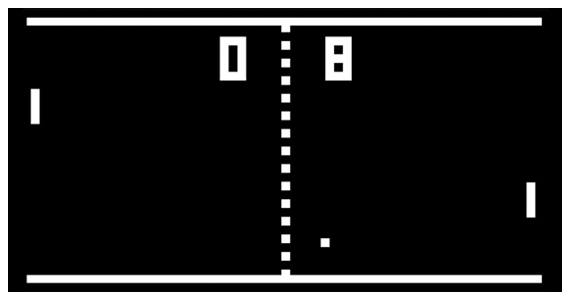From ATARI till Xbox 360 with Kinect the exhibition gives to us a complete panorama of evolution, technology, design, language, mechanics and market in the video games universe.
The visit inspired myself to write this post. I've played a lot of classics of my childhood in the fair: Pitfall (ATARI, Activison, 1985), Space Invaders (Arcade, Taito, 1978), Donkey Kong (Arcade, Nintendo, 1981), Pac Man (Arcade, Namco, 1980) and many others in different platforms.
But I want to talk about a particular one. I want to talk about PONG, one of the first well succeed games in the history and a game with a great importance in the contemporary scene of communication. PONG is part of a series of experiments in which people began to interact with screens and became more than mere spectators.
 PONG it´s an example of simple and elegant game design. It´s simple because there´s only one rule printed in the arcade: "avoid missing ball for high score" and it´s elegant by the minimalist design/idea of a table tennis made with few elements in the screen.
PONG it´s an example of simple and elegant game design. It´s simple because there´s only one rule printed in the arcade: "avoid missing ball for high score" and it´s elegant by the minimalist design/idea of a table tennis made with few elements in the screen.Salen and Zimmerman in the preface of the book Rules of Play (page XIII and XIV) explain why PONG is a successful game. The authors explain that the game despite its almost primitive simplicity, creates meaningful play. PONG is simple to play, every game is unique, it´s social (requires two players to play) and finally it´s fun and cool.
PONG still alive today. We can see the idea and mechanics of this game in new versions, new layout, internet ads and a lot of other places. PONG is a proof that good game design can survive the time.
And you? What do you think about that?
Game over! =)
Reference:
SALEN, Katie & ZIMMERMAN, Eric. Rules of Play: game design fundamentals. Massachusetts; The MIT Press, 2004

Hi, this page is amazing, i love the ideas and creativity! I also have my own blog and portfolio! It would help me out a lot if you would take a look! thank you! Rhoar. My portfolio Or my blog:
ResponderExcluir